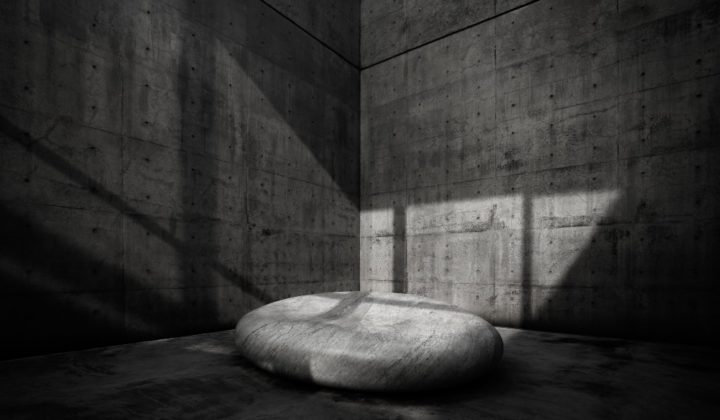In a world where anime in Japan is one of the country’s central points of appeal – the reason several tourists add Japan to their travel bucket lists – that naturally comes with an insurmountable (almost indescribable) amount of clout. Within Japan’s overall anime culture, fans hold a particular entity incredibly close to them. Quite like Disney and Pixar (but also unlike them), this entity does play a monumental role in how Japan and the world perceives and follows anime, and it’s called Studio Ghibli.
How Studio Ghibli Became Popular

Image Credit – Unsplash.com
Studio Ghibli – as one of the most popular animation film studios in Japan – needs no introduction. The studio began making its way to the top of the food chain in 1985, under the visions of Miyazaki Hayao, Takahata Isao, and Suzuki Toshio and is now a fan-favorite, not to mention critically acclaimed.
As a now-household name, Studio Ghibli is associated with some of the most iconic anime movies within and outside Japan, further boosted by never-disappointing soundtracks and plots you grow to treasure for long after you watch a Ghibli movie. The main backing to Studio Ghibli’s popularity is that it pays great attention to detail, chooses extremely unique themes as its focal point, and its high quality of production in general. Many other animation studios also feature these elements, however. So why does Studio Ghibli, in particular, stand out?
Why Studio Ghibli Is As Iconic As It Is
Balancing Fantasy And Reality
Ghibli movies employ the concept of immersive realism, where there is a balance between elements of fantasy and realism. For example, Majo no takkyūbin, more popularly known as Kiki’s Delivery Service (1989), includes elements of feminism by portraying Kiki (who’s a witch) as a strong-minded individual and how she overcomes the challenges she faces (Kiki’s Delivery Service is set in Koriko based on parts of Sweden where witch trials were common at the time). These feminist components that show how Kiki grows as an independent thinker, not to mention the outstanding visuals, draw the audience in quite successfully.
Appreciating Scenic Beauty
Ghibli movies make it a point never to undermine the beauty of nature and what it has to offer. According to Miyazaki, this is intentionally done to highlight how beautiful the world is and that natural beauty (be it the weather, wind, water, or greenery) must be appreciated to the fullest. Ponyo (2011) is an excellent example because it is the best Ghibli movie to explain how much these movies make it a point to never push nature into a blurry background and how they are always at the forefront. Ponyo features beautiful scenery, yes, but – again – it is also realistic because it showcases the dark sides of nature by featuring pollution and more.
Addressing Important Issues
Anime is always appreciated for its efforts to showcase a deeper meaning, and many of them are even ahead of their times. Ghibli movies are particularly known for this element, and it is undoubtedly one of the best elements they have to offer.
They also address anything within the storyline involving love with much more maturity than most other fairy tales do. Love is not just romantic here; it can also be platonic, between siblings, between parent and child. A deeper meaning here would be loving the self.
Hauru no Ugoku Shiro, or Howl’s Moving Castle (2004), is one movie that truly captures the essence of how deep Ghibli movies can be. Although based on the book of the same name by Diane Wynne Jones, Ghibli makes great effort in bringing it to life. It’s an anti-war movie (which is one crucial issue the movie addresses), but more than that too. The movie takes our protagonist Sophie on a journey of self-love after she is cursed into an old woman, which does not help her pre-existing inferiority complex. She learns to use her old age as a sign of wisdom and grows to appreciate the people surrounding her, to love Howl (romantic love), Markl, and Calcifer (familial love).
Studio Ghibli’s Impact on Overall Anime Culture

Image Credit – Unsplash.com
Studio Ghibli is now such an integral part of anime and what it means to appreciate Japanese anime. You cannot dissociate Studio Ghibli or claim it as an independent entity because Ghibli movies play an instrumental role in the direction Japanese anime is taking and will continue to take in the future.
Studio Ghibli’s role in popular culture – especially to foreigners – is that it is so drastically different from other overwhelmingly popular studios like Disney and Pixar (which also deal with fantasy). Its emphasis on underlying meanings and what the ultimate message is to the audience is what makes Ghibli movies fan-favorites, even if they are ultimately made for kids.
What Studio Ghibli Means For the Future of Anime

Image Credit – Unsplash.com
Right from Tonari no Totoro, or My Neighbour Totoro (1988), which broke the global boundaries of anime outreach, Studio Ghibli continues to be on the rise as a method of Japanese storytelling. They not only serve as inspiration for other movies but also continue to pave the way for future Ghibli movies to continue this legacy, thanks to previous successes.
Even if there ever comes a time when Ghibli stops making new movies, the Studio will still continue to play a major role in boosting the role anime has to play in transcending boundaries. These movies bring people from various backgrounds together as they all commonly appreciate the beauty Studio Ghibli is in itself and the beauty it has to offer.
Related Articles:
- Japanese Horror: The Genre that Terrorises Japan
- Slice of Life: The Underrated Genre
- A Closer Look at Cool Japan
Featured Image Credit – Unsplash.com






